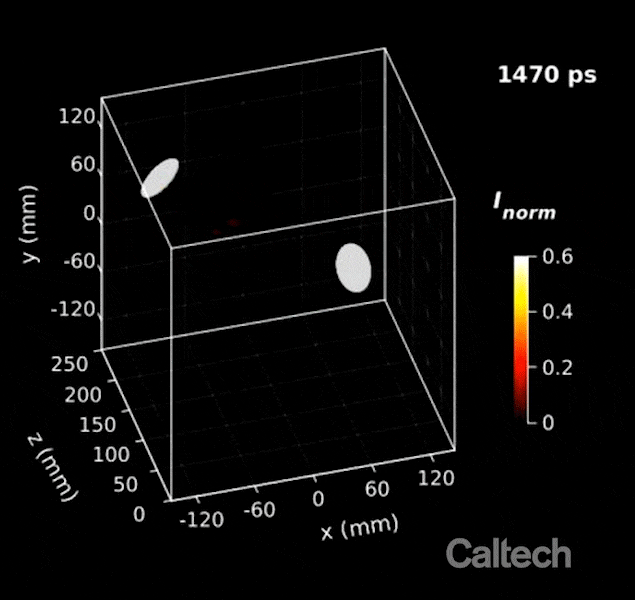- Researchers from Caltech have developed an ultrafast 3D camera capable of taking 100 billion frames per second.
- It is named as “single-shot stereo-polarimetric compressed ultrafast photography,” or SP-CUP
- The camera works like human eyes to capture an image in two views with an offset.
- The camera also posses the ability to see the polarization of light waves.
A team of researchers from the California Institute of Technology has developed an ultrafast three-dimensional camera capable of taking up to 100 billion frames per second.
Professor Lihong Wang, Bren Professor of Medical Engineering and Electrical Engineering in the Andrew and Peggy Cherng Department of Medical Engineering, at Caltech, has previously developed a technology that can reach incredible speeds of 70 trillion frames per second. This is fast enough to see light travel but this technology could only produce 2D flat images.
Taking a step forward, Wang and his lab have now developed a camera which can record video at incredible speeds in three dimensions.
Wang named the new iteration as “single-shot stereo-polarimetric compressed ultrafast photography,” or SP-CUP.
The team added a third dimension to their previous technology to make the camera see like humans. Basically, human brains can make a 3D image as our two eyes observe objects and their surroundings from a slightly different angle. The current 3D camera also works in a similar way.
“The camera is stereo now,” Wang says. “We have one lens, but it functions as two halves that provide two views with an offset. Two channels mimic our eyes.”

SP-CUP has another innovation as well that no human possesses: the ability to see the polarization of light waves.
What is the Polarization of Light Waves?
The polarization of light refers to the direction in which light waves vibrate as they travel. Generally, light waves vibrate in all the directions but polarized light has waves all of which vibrate in the same direction. Polarized light can be produced by some natural processes like reflecting or by some artificial manipulation as well.
Wang hopes that their new camera will help researchers understand the physics of sonoluminescence, the emission of short bursts of light from collapsing bubbles in a liquid when excited by sound.
“Some people consider this one of that greatest mysteries in physics,” he says. “When a bubble collapses, its interior reaches such a high temperature that it generates light. The process that makes this happen is very mysterious because it all happens so fast, and we’re wondering if our camera can help us figure it out.”
Journal Reference:
Jinyang Liang, Peng Wang, Liren Zhu, Lihong V. Wang. Single-shot stereo-polarimetric compressed ultrafast photography for light-speed observation of high-dimensional optical transients with picosecond resolution. Nature Communications, 2020; 11 (1) DOI: 10.1038/s41467-020-19065-5
Press Release: California Institute of Technology

